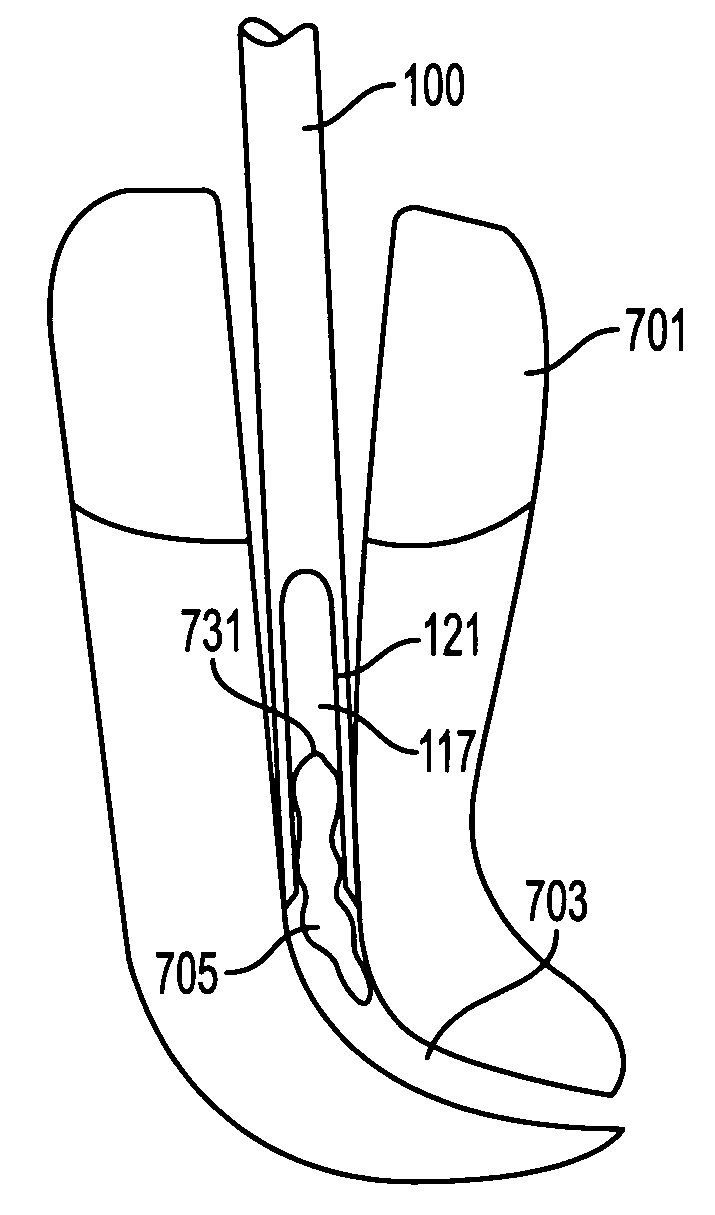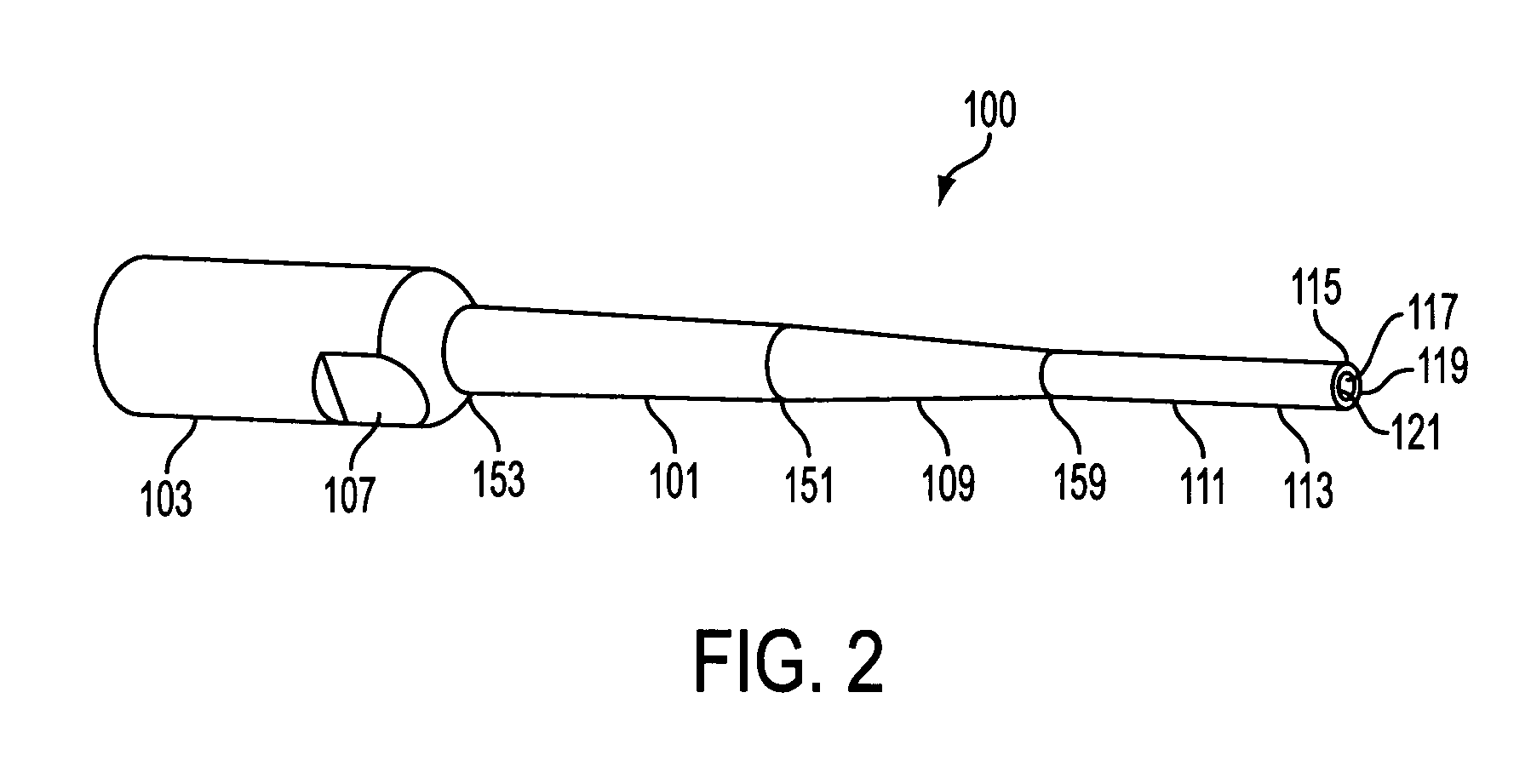Ultrasonic microtube dental instruments and methods of using same
a dental instrument and ultrasonic technology, applied in the field of dental instruments, can solve the problems of reducing the amount of tooth structure which needs to be removed to expose enough broken instruments to allow removal, and affecting the effect of root canal procedur
- Summary
- Abstract
- Description
- Claims
- Application Information
AI Technical Summary
Benefits of technology
Problems solved by technology
Method used
Image
Examples
first embodiment
[0025]the microtube instrument (100), is illustrated in FIGS. 2–4. This is a straight microtube instrument (100). The microtube instrument (100) generally comprises an elongated shank (101), which may be of any elongated form but is preferably of generally cylindrical shape with a relatively constant diameter. Towards the proximal end (153) of the elongated shank (101) there is attached a connector (103). The connector (103) in these figures comprises an internally threaded socket (105) for threadably mounting on the end of a shaft (generally on the ultrasonic generator (200)). The connector (103) further includes at least one flat outer surface (107). In another embodiment, the entire outer surface is composed of a plurality of flat surfaces. The flat outer surface (107) provides a place for engagement by a wrench or the like for threadably tightening and loosening the microtube instrument (100) from the ultrasonic generator (200). The connector (103) may be separable from the micr...
second embodiment
[0031]FIGS. 5–6 provide for a microtube instrument (100) that provides an additional modification to the instrument shown in FIGS. 2–4. In this embodiment, the shank (101) is bent at an angle beyond the connector (103). While any type of angle maybe used it is preferred that the shank (101) be bent into a contra-angle. A contra-angle portion actually comprises two separate angles as the shank (101) is first curved or bent in a first direction away from the original axis of the shank (101), and is then bent back across the same axis. It is preferred, but by no means required, that the first bend forms an angle (505) of about 15 degrees to about 25 degrees with the original axis (503) and the second bend forms an angle (507) of about 45 degrees to about 70 degrees to the same axis (505) as shown in FIG. 5. The contra-angle will generally occur prior to the intermediate section (109), if one is present, but that is also not required.
[0032]The various embodiments of instruments shown in...
PUM
 Login to View More
Login to View More Abstract
Description
Claims
Application Information
 Login to View More
Login to View More - R&D
- Intellectual Property
- Life Sciences
- Materials
- Tech Scout
- Unparalleled Data Quality
- Higher Quality Content
- 60% Fewer Hallucinations
Browse by: Latest US Patents, China's latest patents, Technical Efficacy Thesaurus, Application Domain, Technology Topic, Popular Technical Reports.
© 2025 PatSnap. All rights reserved.Legal|Privacy policy|Modern Slavery Act Transparency Statement|Sitemap|About US| Contact US: help@patsnap.com



